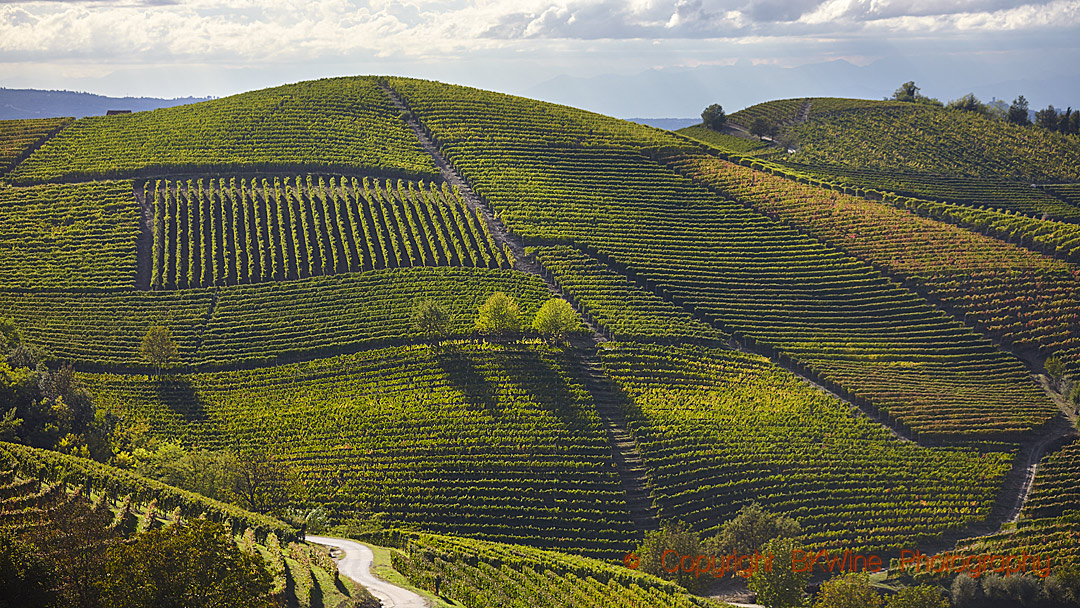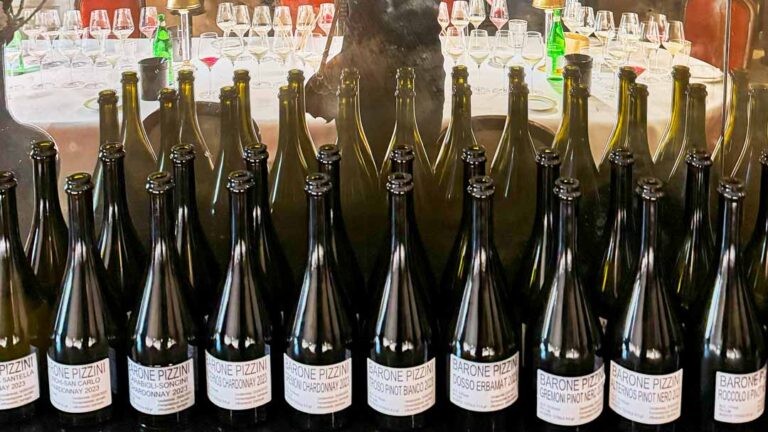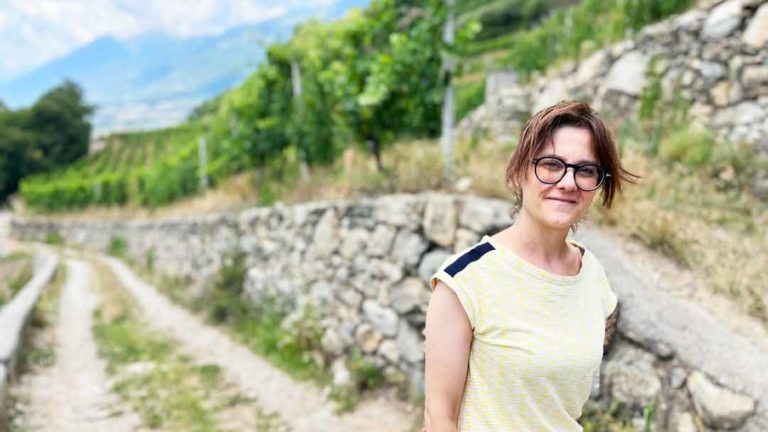“I want to give everything, I only live once and I want to give everything I have,” says Marco Parusso from the eponymous wine estate in Monforte d´Alba in Barolo.
You can feel that in the wines. There’s a lot of everything. Fruit. Colour. Tannins. “Tannins are the hallmark of Barolo and they should be there,” says Marco. Less is more, does not exist here. That’s for sure.
Since Marco started working in the family winery in 1986, along with his sister Tiziana, a lot of time has been spent researching and trying new techniques to make barolo wines that he likes himself. “My barolos are delicious to drink early but they can also be aged. We will release a Barolo 2000 next year to show how well they develop,” says Marco.
He works in his own way both in the field and in the cellar. In a time when you often hear wine producers say that they do as little as possible so as not to affect or stress their wines, Marco does the opposite. One has to make an effort not to lose track when he talks about how he works with his nebbiolo grapes.
First, he picks the grapes and leaves the whole clusters to rest in a room where he controls moisture and temperature. “The grapes are stressed right after harvest and the stalks release bitter tannins. When the grapes and the stalks are left to rest for a few days, they come into contact with oxygen. Then the molecules change and give tannins that get longer and thus softer,” he says. He says water in the stalks evaporates and gives room to more oxygen, which helps start the fermentation. About seventy percent of the stalks are present during the fermentation.
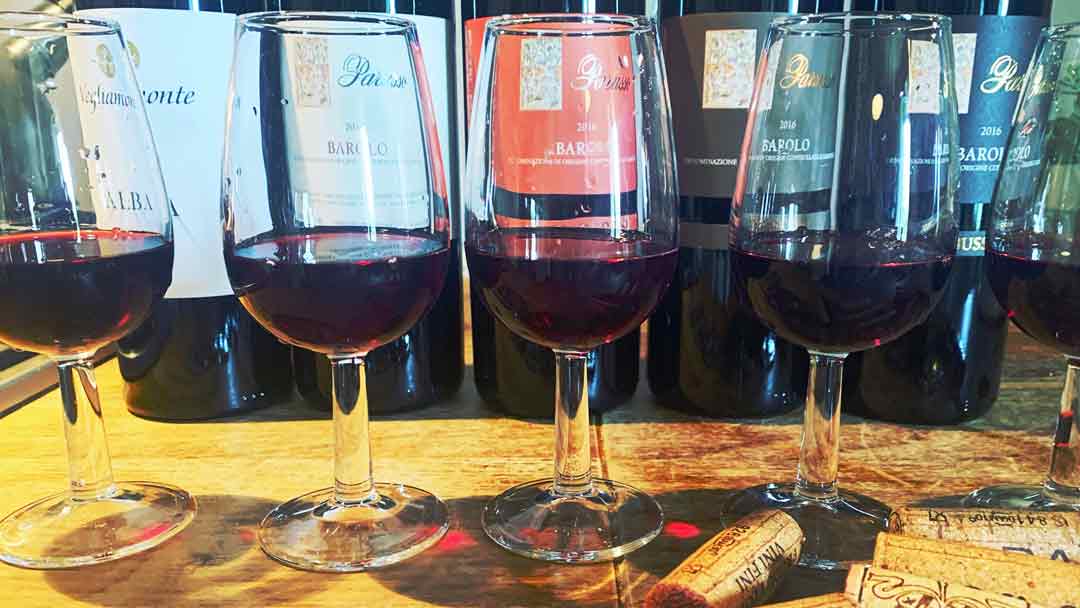
He uses horizontal fermentation tanks, so-called rotofermenters, rotating fermentation tanks. It gives more contact between must and skins compared to a traditional vertical tank. More tannins, colour and polyphenols are extracted in less time.
“First I cool down the tank to do a cold maceration, to extract aromas, while avoiding fermentation.”
Then he raises the temperature to 33 degrees centigrade for two days. “To leach out as much colour as possible. Our wines are always darker compared to many other barolos,” he says.
He then lowers the temperature to 25 degrees for a slow fermentation until all the sugar has fermented out. When the wine has finished fermenting all sugar, he heats the tank again to 29 degrees. “I want to extract more than everything!” says Marco with great empathy. After that, the skins will remain in the wine to macerate between 40 and 60 days.
“We have very expensive technology and it requires a lot of work, which justifies our prices being high. Those who do nothing should, I think, charge less,” he says.
He then ages the wines on French oak barrels for two years before bottling. He only adds a little sulphur before bottling.
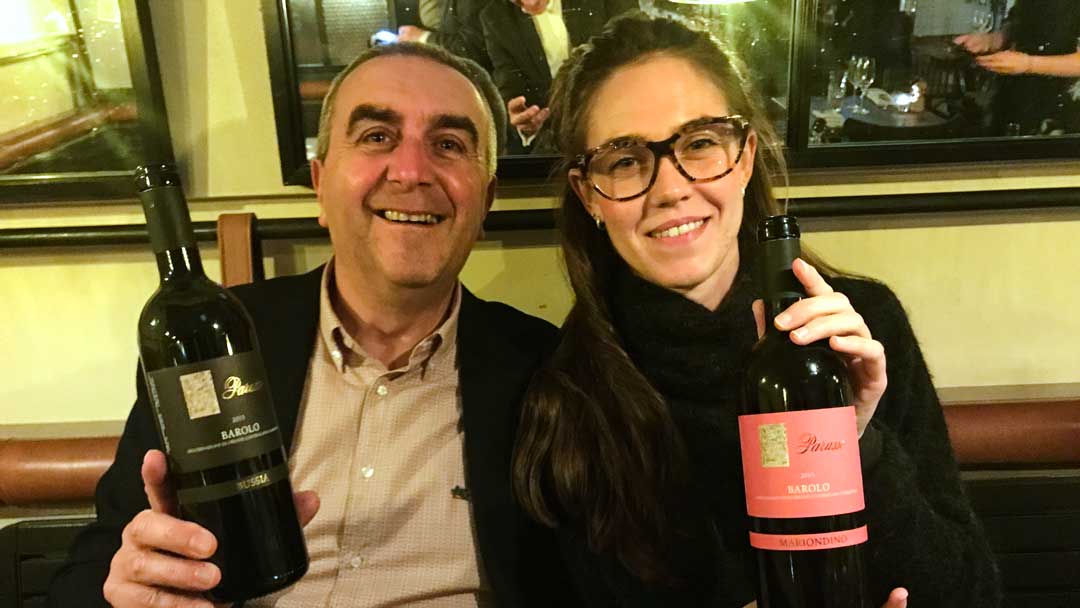
Here are my tasting notes:
Alba Vegliamonte, Marco Parusso
“I didn’t know about Alba doc before 2016, but I really believe in the wines that are a mixture of nebbiolo and barbera,” says Marco. His DOC Alba is 70 percent nebbiolo and the rest barbera and a small proportion of other red grapes. He ferments the different varieties together.
Intense scents of ripe plums, black currants, white pepper and tar. High acidity, lots of tannins but also a lot of fruit that gives balance. Full-bodied and medium length.
Barolo 2016, Marco Parusso
Intense aromas of small red fruits, lingonberries, red currants, medicinal herbs, mint, lemon balm and leather and tar, peppery, but the aromas have a lot of fruit. High and tight tannins, medium acidity and still a lot of fruit. It’s full-bodied and with a lot of tannins.
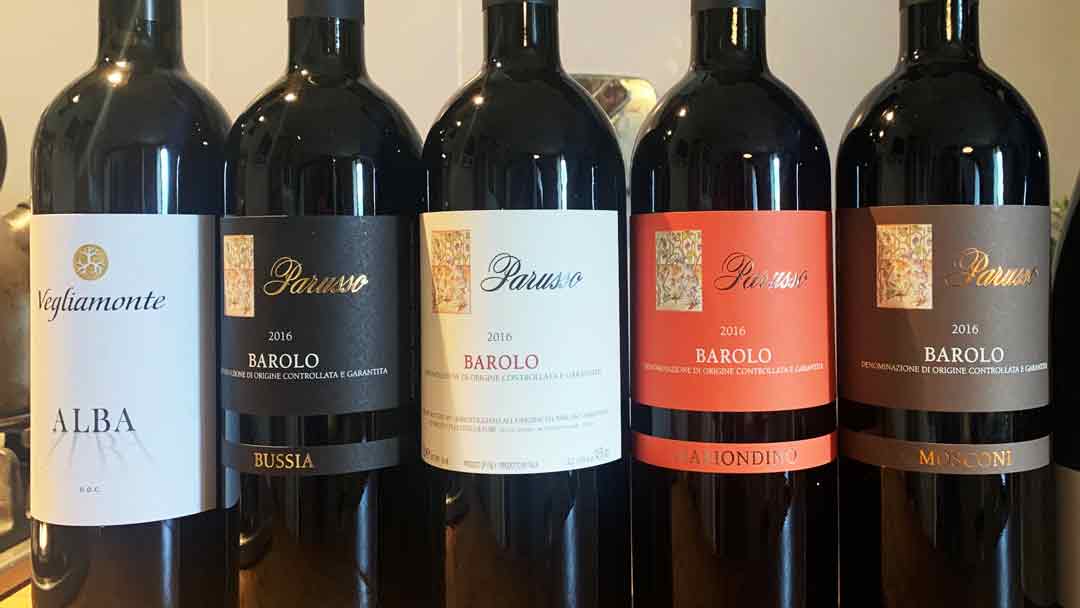
Barolo Mariondino 2016, Marco Parusso
A Barolo from the Mariondino vineyard (one of Barolo’s officially named sub-districts) that has plenty of sand, afternoon sun and cold winds from the north.
Ripe blue plums, blackberries but what is striking is the sweet spices. Cinnamon, cardamom, cloves, they’re present even in the taste with well-preserved fruit and high but ripe and well-integrated tannins, medium acidity and good length. A full-bodied barolo that I would like to drink in five or ten years.
Barolo Mosconi 2016, Marco Parusso
South of Monforte, morning sun and soil with clay and a lot of limestone. Also one of the official sub-regions.
A Barolo that is less dominated by the fruit, more tannins. Earthy tones, leather, tar, medicinal herbs, sage, high tight tannins, medium acidity, and a long and tannic finish. For the true barolo lovers.
Barolo Bussia 2016, Marco Parusso
Grapes from two vineyards in the sub-region of Bussia: Le Rocche which has morning sun and limestone soil and Vigna Mugne which has more clay. They are vinified separately and blended after two years.
Classic Barolo nose. Rose petals, tar, balsamic notes. High tangible tannins, medium acidity, astringent, yet a sweetness at the end that rounds it off. Needs some time but look forward to trying this in a couple of years.
If you are the one who buys a salad when everyone else is eating burgers, this is not for you. To appreciate Parusso’s wines, you should also love the motto “a lot of everything”.
Åsa Johansson is BKWine’s person in Italy. She lives in Florence since the early ’00s. Asa writes regularly on wine and food in Swedish and Italian publications as well as online.
Piedmont is known for its wines, its truffles and its beautiful landscape. All this and more you can enjoy on a wine and gastronomy tour to Piedmont with BKWine.
Travel to the world’s wine regions with the wine experts and the wine tour specialist.
Delicious wine tours. BKWine wine tours.
